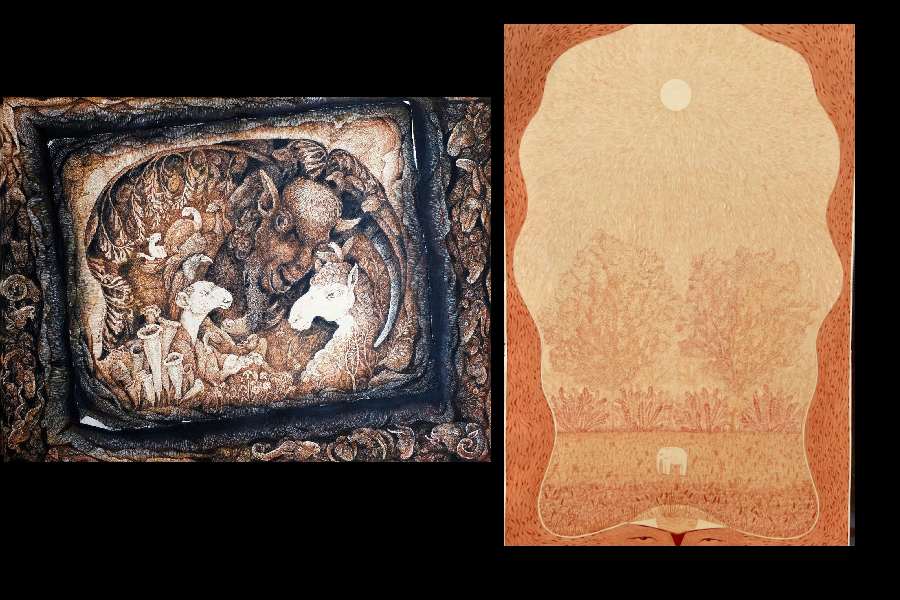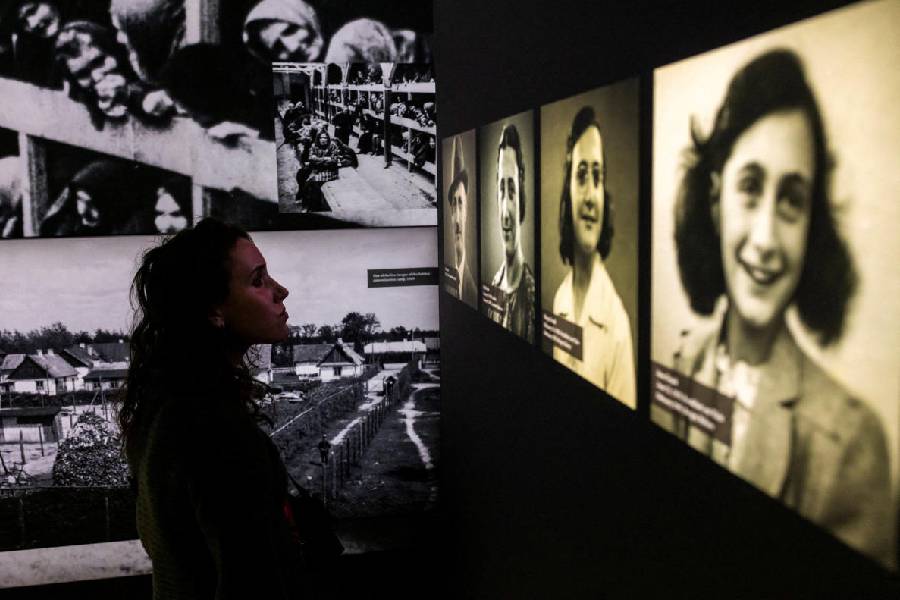A group of 19 women artists — including the curator, Chandrima Bhattacharyya — participated in the exhibition, Songs of the Yin, held at the Harrington Street Arts Centre recently. It was a multimedia exhibition and, although it was mostly paintings that were displayed, Anita Bhattacharya used the dokra technique for her sculptures, Archana Rajguru created mask-like faces with colourful synthetic wool yarn, and Mukta Jana and Owanka Bhattacharjee presented ceramics.
The curator has written in her statement that she had chosen the participants randomly although some were her acquaintances. So there was no common issue that linked the artists. The curator has painted and stippled fantastical, highly-detailed, modernised (read Westernised) versions of Goddess Lakshmi. But the putative political message can hardly be discerned. Gouri Vemula creates illusory zoomorphic forms with elements of the botanical world in her beautiful drawings (picture, left). The detailing is quite amazing. Darshana Sen ‘Pukki’ paints her very private world aglow in a soft light. Sudeshna Mitra Battig, too, depicts her private garden with its complex web of greenery. Both artists are surprisingly self-absorbed. Throwing aside all pretences to profundity, Ruchira P. Santosh does a realistic still life. Her monochromatic basket of fish in a market testifies to her power of observation.
Against a plain white background, Priyanka Bardiya paints delicate, if idiosyncratic, floral forms. They are like musical notes springing to life. Sanchita Sengupta’s collage of images derived from disparate sources and composed of different materials comes alive in a flurry of colours and intriguing fragments of pictures. Sujata Kar Saha’s image, printed on archival paper, of rows of clay fingers sprouting from both sides of a piece of red cloth, is mystifying. This surrealistic image resembles a giant centipede.
Lisa Sasonova is from Russia but lives and works in Santiniketan. Her delicate paintings, either watercolours or gouache, are influenced by Indian miniatures and Abanindranath Tagore. But she does not imitate; she makes imaginative use of these inspirations and creates her own (picture, right).











